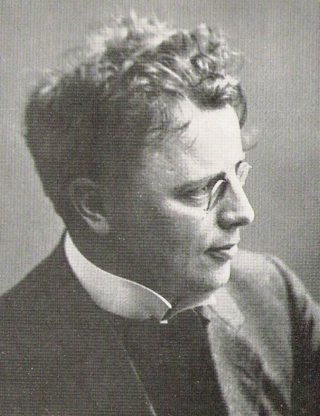Related Research Articles
Knud Jeppesen was a Danish musicologist and composer. He was the leading scholar of the composer Giovanni Pierluigi da Palestrina, about whose life and music he wrote numerous studies.

Carl August Nielsen was a Danish composer, conductor and violinist, widely recognized as his country's most prominent composer.
Ellen Taaffe Zwilich is an American composer, the first female composer to win the Pulitzer Prize for Music. Her early works are marked by atonal exploration, but by the late 1980s, she had shifted to a postmodernist, neoromantic style. She has been called "one of America's most frequently played and genuinely popular living composers." She was a 1994 inductee into the Florida Artists Hall of Fame. Zwilich has served as the Francis Eppes Distinguished Professor at Florida State University.

Vagn Gylding Holmboe was a Danish composer and teacher.

Per Nørgård is a Danish composer and music theorist. Though his style has varied considerably throughout his career, his music has often included repeatedly evolving melodies—such as the infinity series—in the vein of Jean Sibelius, and a perspicuous focus on lyricism. Reflecting on this, the composer Julian Anderson described his style as "one of the most personal in contemporary music". Nørgård has received several awards, including the 2016 Ernst von Siemens Music Prize.

Rued Langgaard was a late-Romantic Danish composer and organist. His then-unconventional music was at odds with that of his Danish contemporaries but was recognized 16 years after his death.

Hilding Constantin Rosenberg was a Swedish composer and conductor. He is commonly regarded as the first Swedish modernist composer, and one of the most influential figures in 20th-century classical music in Sweden.
Ib Nørholm was a Danish composer and organist.

Carl von Garaguly, also known as Carl Garaguly, was a Hungarian violinist and conductor who spent much of his working life in Scandinavia. He was born in Budapest, and worked many years in Gothenburg and Stockholm, Sweden, both as violinist and as a conductor.

Thomas Jensen was a Danish orchestra conductor.
Herman David Koppel, known in Denmark as Herman D. Koppel, was a composer and pianist of Jewish origin. Born in Copenhagen, he fled the Nazis with his family to Sweden in 1943. He wrote 7 symphonies, numerous concertos, 6 string quartets and other chamber music, piano works, operas and film music.
Niels Finn Høffding was a Danish composer. Høffding studied composition under Knud Jeppesen and Thomas Laub, and then under Joseph Marx in Vienna from 1921-22. His works first became well known in Denmark in the 1920s, particularly the piece Karlsvognen. He began to study folk music about 1930, and founded the Copenhagen School of Folk Music in 1931. From 1931 he also taught at the Royal Danish Academy of Music, where he served as director after 1954. In 1956 and 1958 he was awarded the Nielsen Prize. His pupils include Pelle Gudmundsen-Holmgreen, Vagn Holmboe, Bent Lorentzen, and Leif Thybo. See: List of music students by teacher: G to J#Finn Høffding.

Karl Henrik Ludolf Nielsen was a Danish composer, violinist, conductor, and pianist. Today he is considered one of the most important Danish composers of the early 1900s.
Kjell Maale Roikjer was a Danish composer and bassoonist.
Emilius Bangert was a Danish composer, organist, and professor. He played the organ at Roskilde Cathedral and also composed orchestral and chamber music.
Asger Lund Christiansen (1927–1998) was a Danish cellist and composer.
The Danish Quartet is a name which has been carried by four Danish quartets:
Henry Holst was a Danish violinist. In his early career he was leader of the Berlin Philharmonic Orchestra under Wilhelm Furtwängler. From the 1930s to the mid-1950s he was based in England, as a soloist and teacher. He held professorships at the Royal Manchester College of Music and the Royal College of Music in London. After 1954 he was based in his native Denmark, where he was professor of violin at the Royal Danish Academy of Music.

Holger Gilbert-Jespersen was a Danish flutist, orchestral musician and academic flute teacher. In 1926, Carl Nielsen's Flute Concerto was written for, dedicated to, and first performed by Gilbert-Jespersen in Paris. He was a member of the Royal Danish Orchestra from 1927 to 1956 as well as a professor at the Royal Danish Academy of Music from 1927 to 1962, where he trained generations of flutists.
Christina Åstrand is a Danish violinist. When she was just 22, she became leader of the Danish National Symphony Orchestra, a position she still holds today.
References
- 1 2 3 4 Bruland, Inge. "Tutter Givskov (1930 -)" (in Danish). Kvinfo. Retrieved 26 November 2019.
- ↑ Kühn-Nielsen, Peter. "Tutter Givskov" (in Danish). Gyldendal: Den Store Danske. Retrieved 26 November 2019.